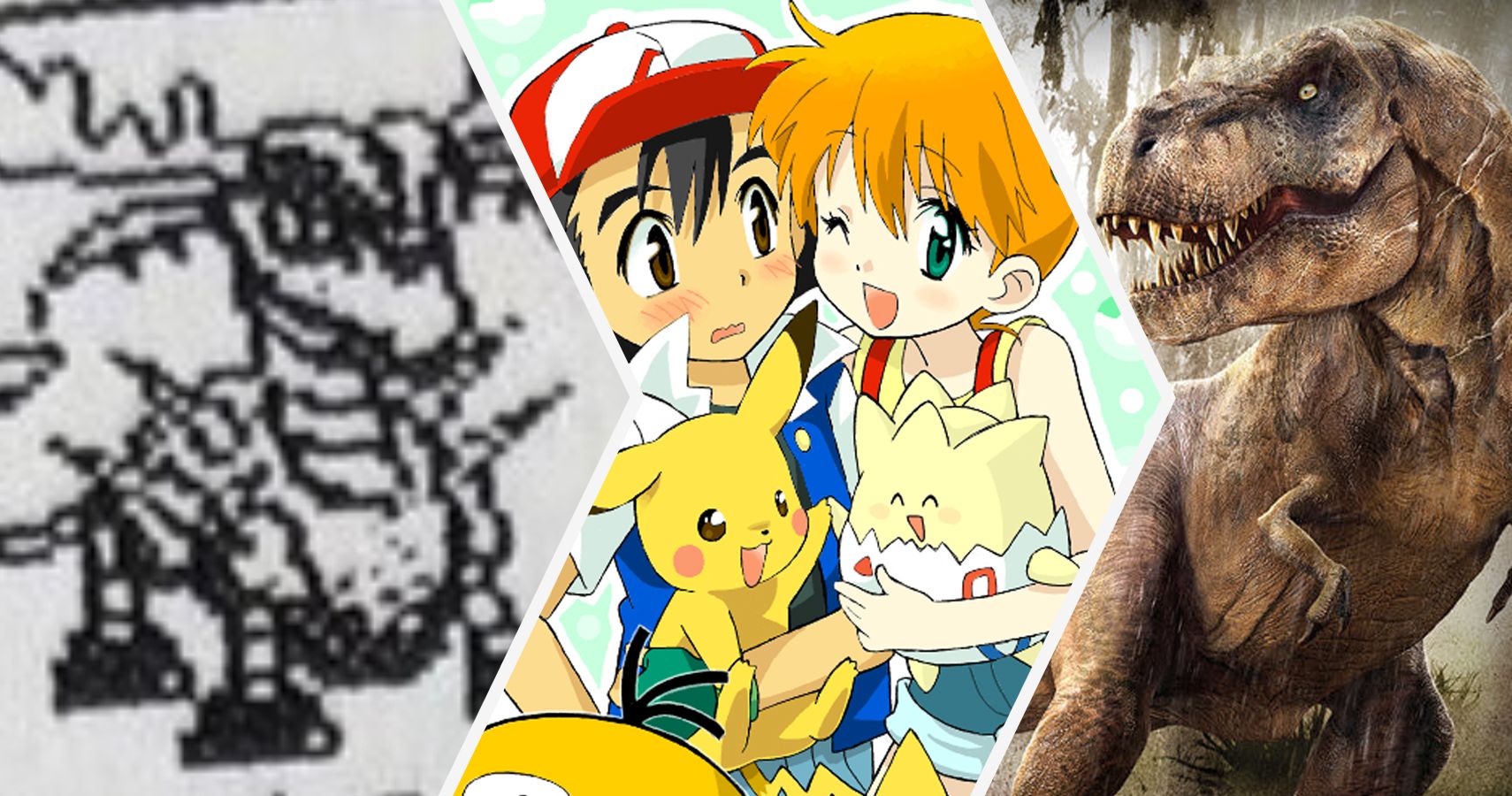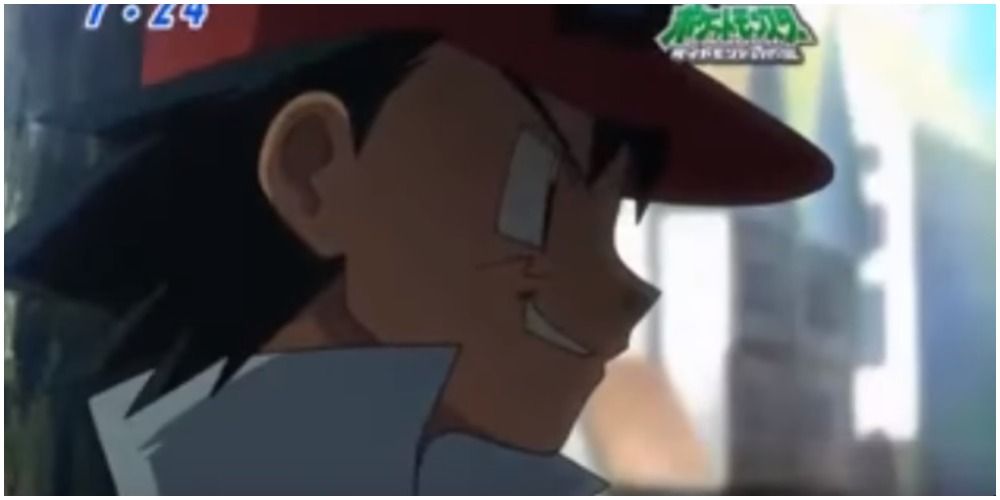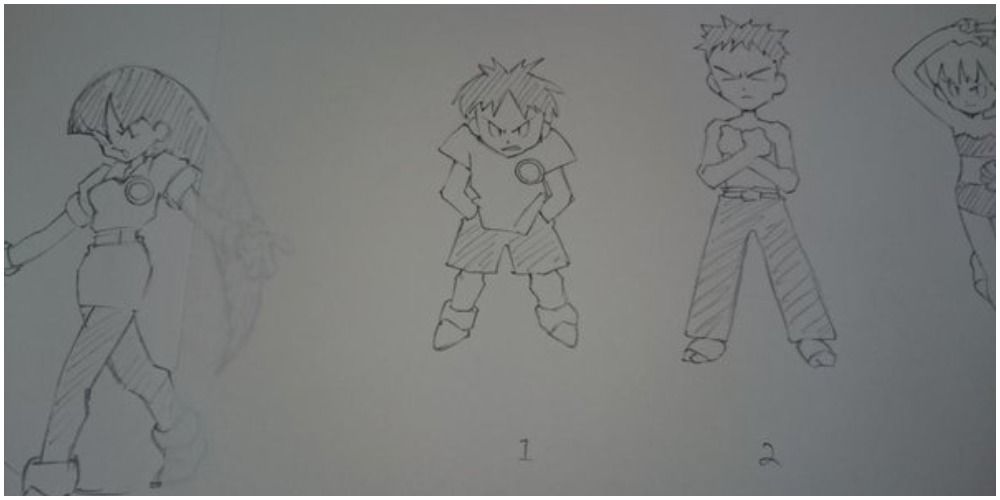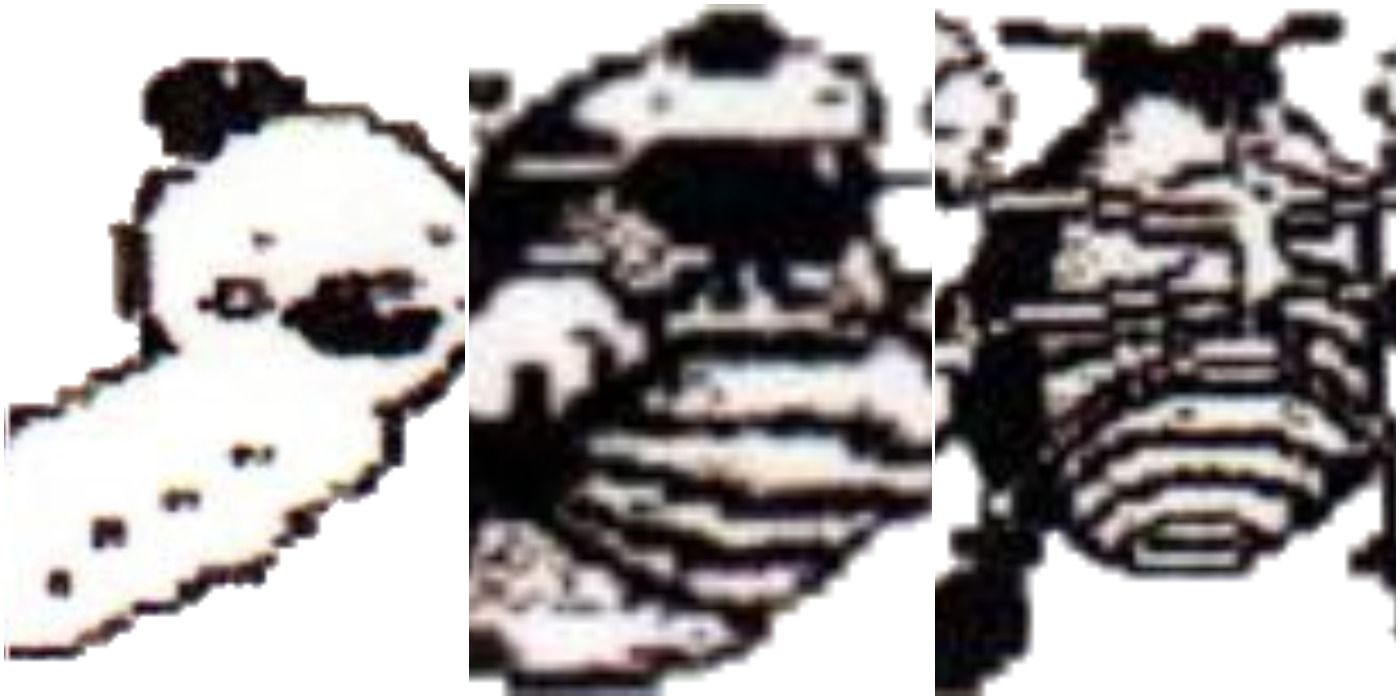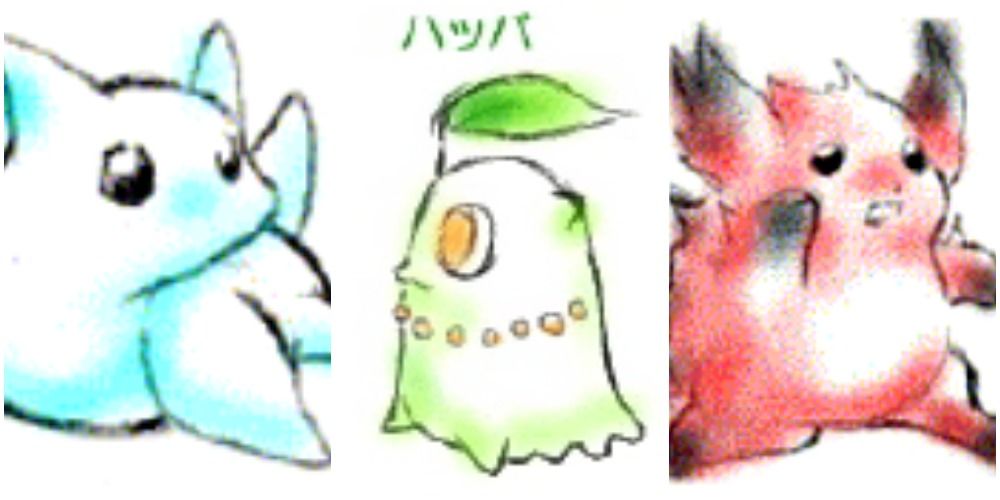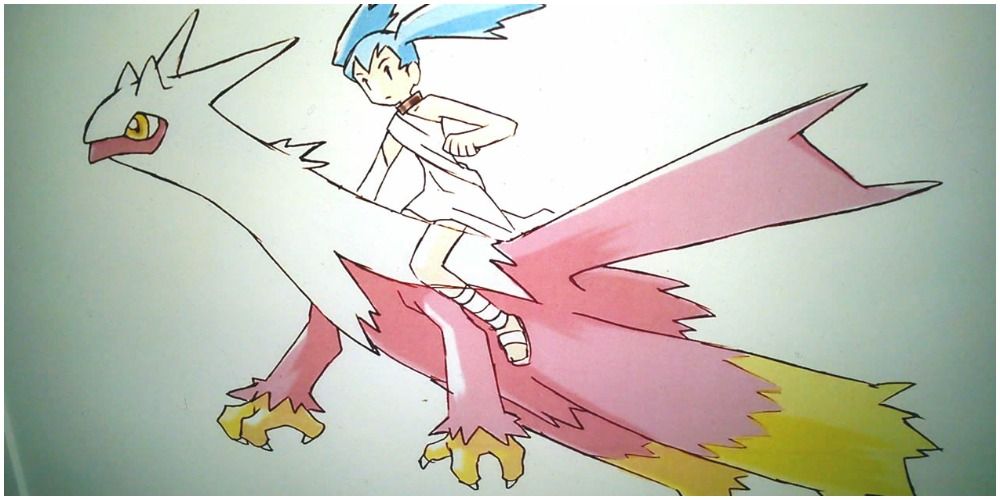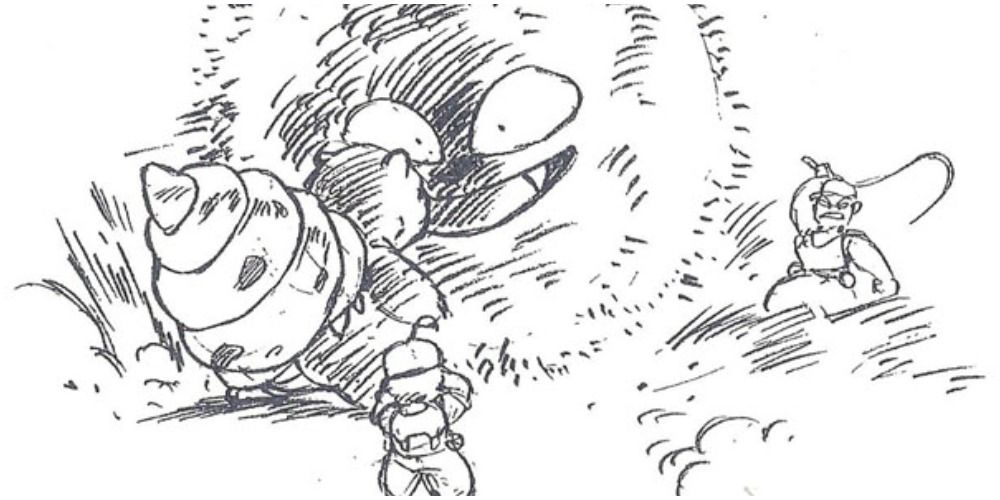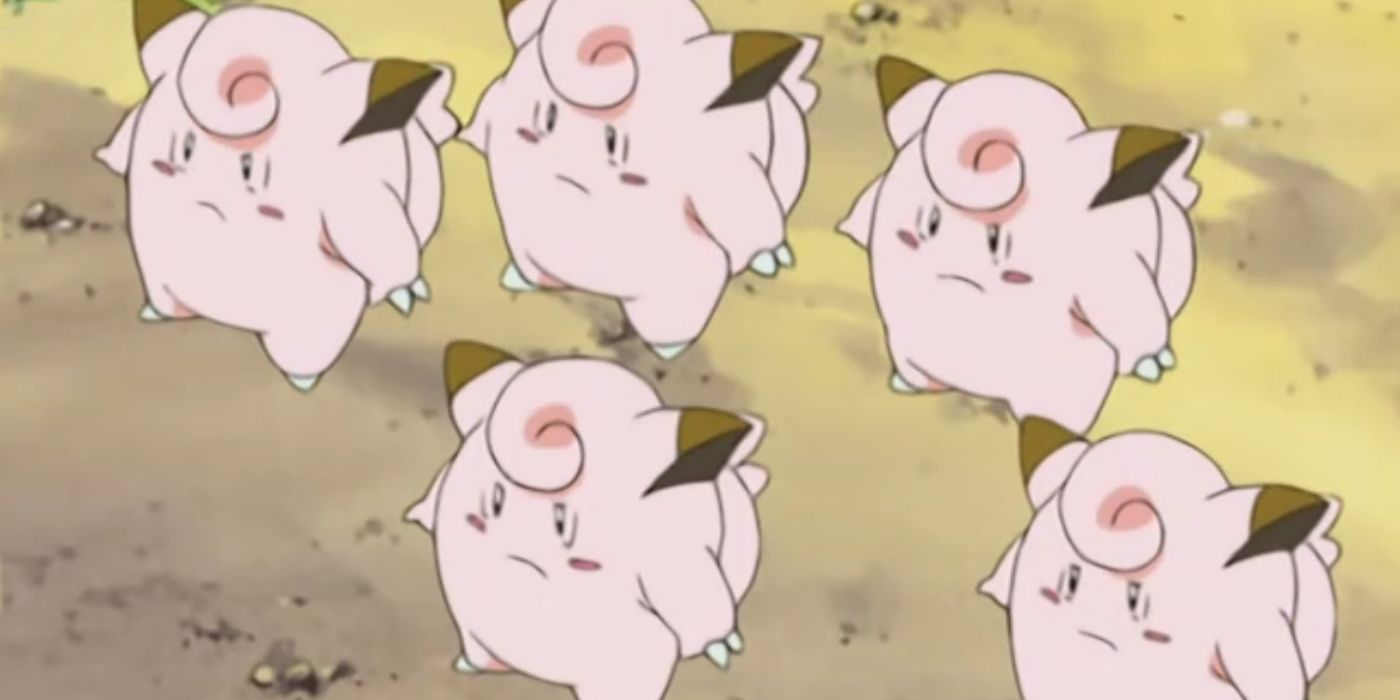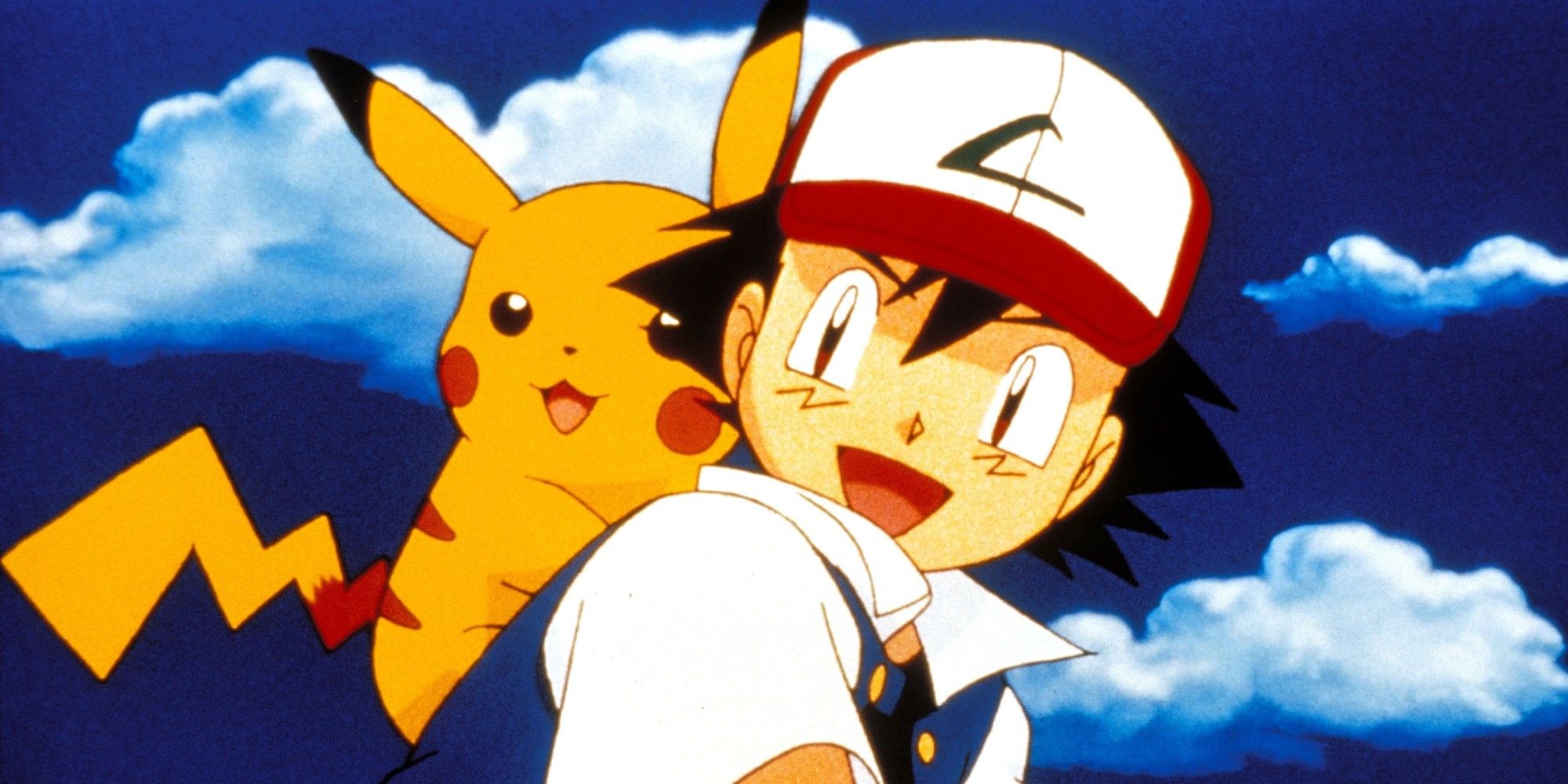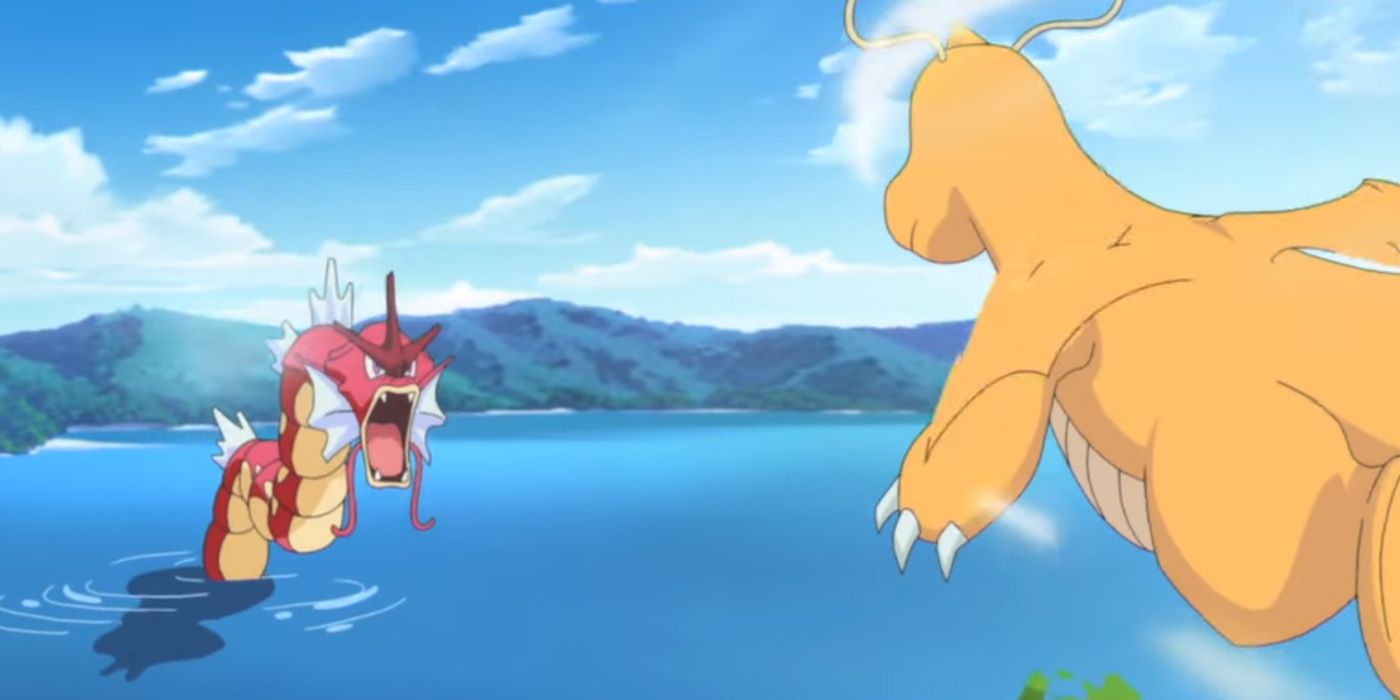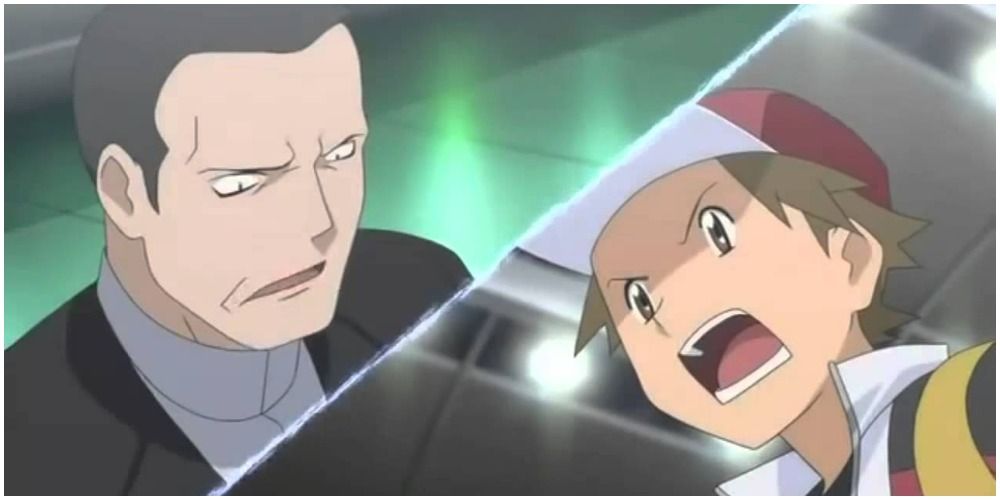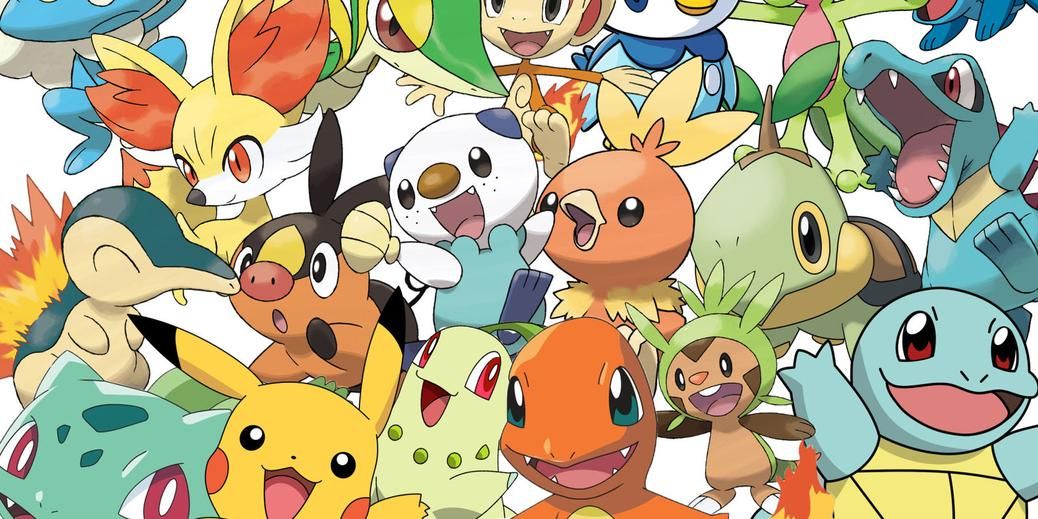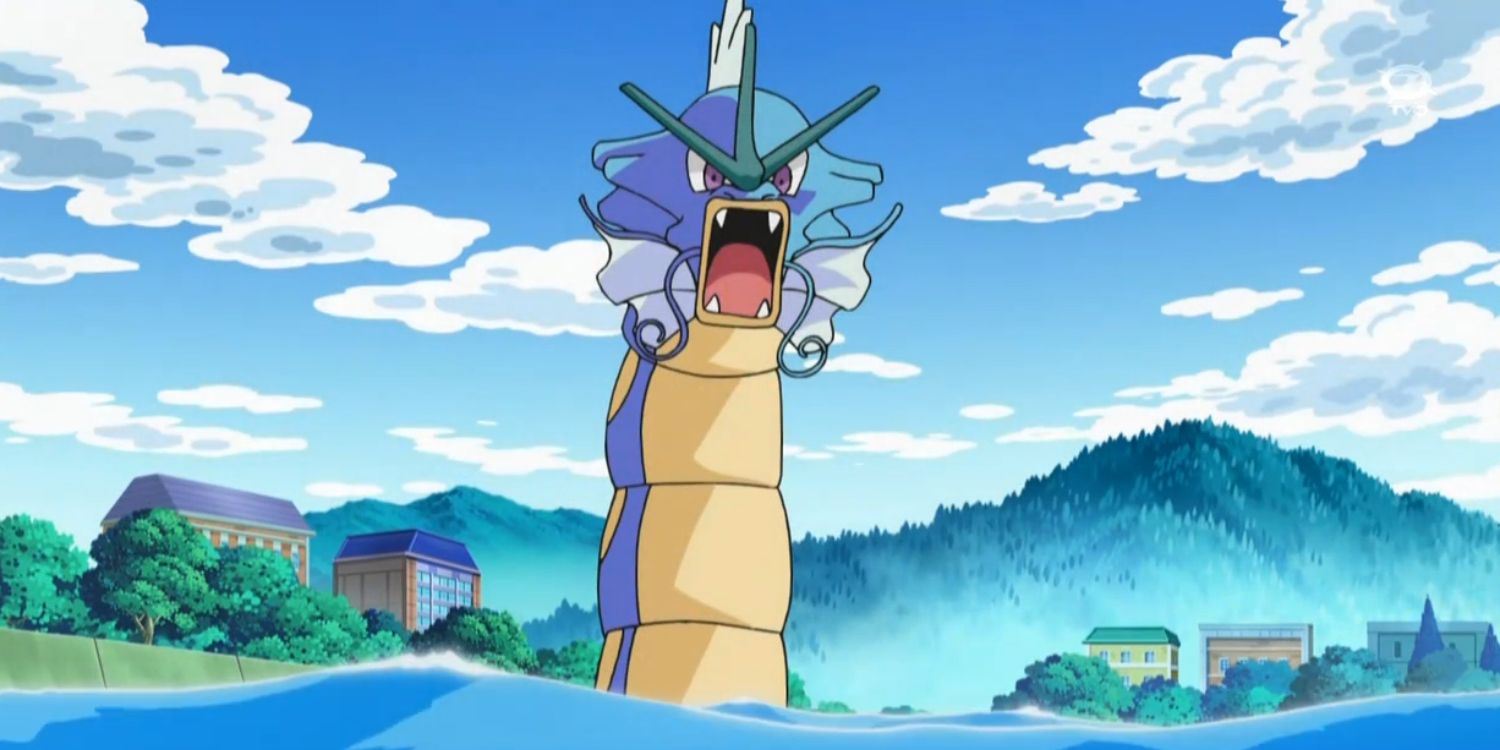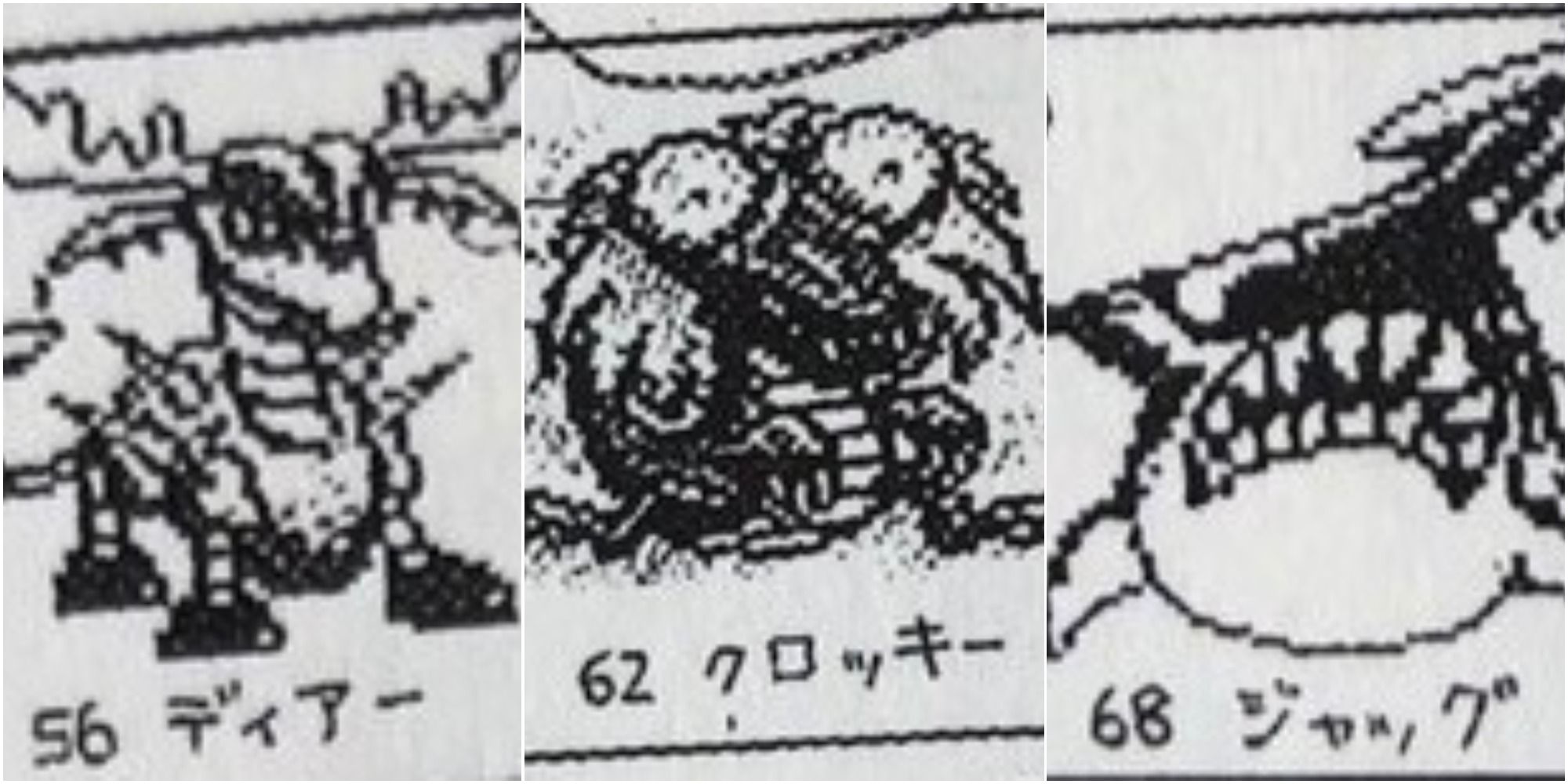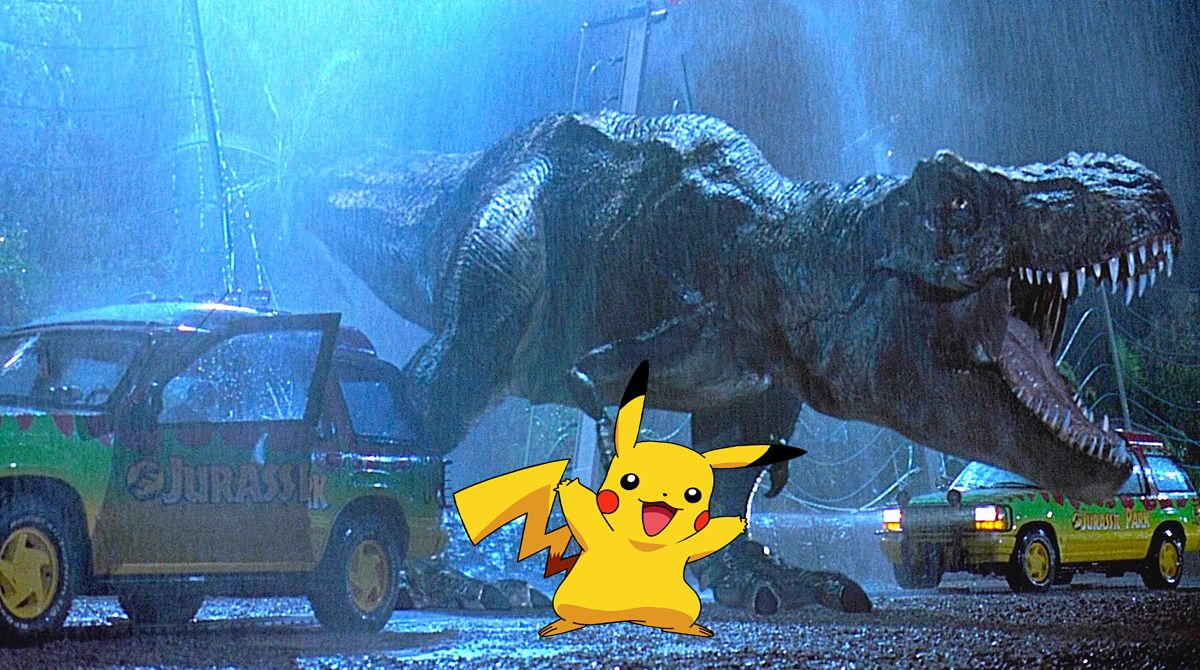The original Pokémon games spent years in pre-production, as the people at Game Freak wanted to make sure that they had all of their ideas ready when they finally had enough money to start actually coding the game.
Pokémon Red & Blue were plagued with technical issues, to the point where they may have been the glitchiest games ever released on a Nintendo system, but the ideas behind the concept were solid, to the point where Pokémon became a huge hit as an anime series (that is still running to this day) and with several different manga series.
Pokémon has since become one of the most profitable media franchises of all time, which means that the people at Game Freak can afford to spend as much time as they need refining the latest games in the series.
This wasn't always the case, though, as it took a while for the minds behind Pokémon to decide on the creative direction for the series as a whole.
There was a period of time when the unprecedented success of the Pokémon series forced the games and the anime to become cyclical, rather than being a continuous story (save for the Pokémon Adventures manga series), which meant that a lot of ideas were left on the cutting room floor.
The Pokémon series could have gone in many different creative directions over the years. We are here today to look at the concepts and ideas that were dropped from the series before they could be implemented: from the mysterious unused footage of the thirteenth movie to Pikachu's battle with a real-life Tyrannosaurus Rex.
Here are the 15 Ways Pokémon Was Almost Completely Different!
Ash's Evil Twin
The Pokémon movies have generally focused on a Legendary Pokémon that somehow became involved with Ash and his friends, with Team Rocket making a half-hearted attempt to capture it.
The thirteenth Pokémon movie focused on a regular Pokémon from the fifth generation of games that was being heavily promoted at the time. This Pokémon was Zoroark, which was a Dark-type Pokémon that possessed the unique ability to take on the appearance of other Pokémon.
Zoroark was presented as being incredibly powerful in the movie, as it possessed the ability to trap the minds of others within an illusion. The version of Zoroark that appeared in Pokémon Black & White wasn't quite as impressive on the battlefield.
Pokémon - Zoroark: Master of Illusions did feature several Legendary Pokémon from Johto, including the three Legendary Beasts (Entei, Raikou, and Suicine) and Celebi.
The fans were surprised that Ho-Oh and Lugia also didn't appear in the movie. This was due to the fact that an aerial battle between the two was shown during the first teaser trailer for the movie, yet neither of them actually appeared in the final product.
The original teaser trailer also showed Ash being confronted by a creepy copy of himself, who was likely Zoroark in disguise.
However, this scene also didn't make it into the movie.
Giovanni Was Almost A Kid & The First Gym Leader
Giovanni is the final Gym Leader of Pokémon Red & Blue. He's a bit of a letdown in terms of his combat ability, as he specializes in Ground-type Pokémon, which means that you will likely have an easy battle against him, as Ground-type Pokémon are weak to Grass-type and Water-type Pokémon.
This means that you have a two-thirds chance of destroying him if you kept using your starter Pokémon throughout the game. You also need to find a Water-type Pokémon in order to use Surf, so there is no excuse for not having the tools necessary for defeating Giovanni.
It seems that Giovanni's position was switched around during the development of the game.
The concept of Giovanni being the leader of Team Rocket and the final Gym Leader seems to have occurred at a late stage during production, as concept art for the Gym Leaders shows a kid who resembles Giovanni as being the first one you were meant to battle.
Ken Sugimori uploaded some concept art for Pokémon Red & Green to his Twitter page, which showed a kid who looked like Giovanni as number one on the list.
This explains why his Gym is at Viridian City and why you need to return there, rather than just putting his Gym in one of the cities that you visit later in the game. It's likely that you were planned to have your first Gym battle against the young Giovanni in Viridian City, as that's the first location you visit after leaving Pallet Town.
Weedle The Cockroach
A lot of Pokémon are based on real-life animals and plants, with a few being based on different pieces of technology.
These have included some Pokémon that are based on less than savory subject matter, such as Paras/Parasect being based on a real-life mushroom that takes over the bodies of ants in a parasitic manner, while Garbodor is a Pokémon based on a bag of smelly trash.
It seems that an even more gross Pokémon was planned to appear in Pokémon Red & Green, as the Weedle line was a replacement for a Pokémon that was based on the life cycle of a cockroach.
Game Freak's website once showed images for three Pokémon that never made it into Pokémon Red & Green. The first was Kokana, which seems to be a very early design for Weedle. This would evolve into Kasanagi, which looks like a more disgusting version of Kakuna.
The final evolution of this Pokémon line was a creature that resembled Ledian from Pokémon Gold & Silver, except that it was obviously based on a cockroach.
This means that the Pokémon series almost had a cockroach Pokémon with four arms that ended in Mickey Mouse-style gloves.
The Original Johto Starters
The success of Pokémon Red & Blue meant that sequels were inevitable. The people at Game Freak were under a lot of pressure to put out something quickly, as Pokémon fever was at an all-time high and demand for more Pokémon titles was coming from both the fans and the people at Nintendo.
The development of Pokémon Gold & Silver took a long time, as the people at Game Freak wanted to improve upon the original games in every respect.
They had originally planned for Pokémon Gold & Silver to be the final games in the franchise, with the battle against Red acting as the endpoint for the series, which is why they wanted the games to be as great as possible.
The lengthy development time of Pokémon Gold & Silver meant that delays were inevitable, with the game being overhauled at several points during production in order to increase the scope of the Pokémon world.
We have been given a glimpse into the original iteration of Pokémon Gold & Silver thanks to a demo that was unveiled at the Space World event in 1997.
The version of Pokémon Gold & Silver that was available at the Space World event actually had different Pokémon for the Johto starters, save for Chikorita, who had a much more primitive design and was called Happa.
The original Water-type starter was a Pokémon called Kurusu, which resembled a seal, while the original Fire-type starter was a Pokémon called Honoguma, which resembled a red Pikachu.
The Blaziken & Latias Fusion
Pokémon Ruby & Sapphire represented a huge leap for the series in terms of the quality of the graphics.
The tiny sprites and the limited color palette of the Game Boy were replaced with a system that was comparable in power to the Super Nintendo, which meant that the characters could have more detail and would appear in full color for the first time.
The more vibrant color palette was reflected in the design of many of the new Pokémon that were introduced in Pokémon Ruby & Sapphire, which helped to further distinguish the new games from the Game Boy generations.
One Hoenn Pokémon that went through a lot of design shifts was Torchic, which originally had large feathers on its head that resembled rabbit ears. There was also another earlier design where Torchic's body was bigger than its head, which made it look more like a real-life chick.
The original version of Blaziken was also vastly different from the one that appeared in the games, as it resembled a mixture between Blaziken and Latias.
It resembled a Latias from the neck up while the body below belonged to Blazkien. The two Pokémon were later split into their own distinct creatures.
The Lost Birds
Pokémon Red & Blue introduced the type system, where all Pokémon were defined by a type that determined their strengths and weaknesses when facing other Pokémon with different types.
This system was broken due to the fact that Psychic-type Pokémon were overpowered and none of the other types held a significant advantage over them. This was changed in Pokémon Gold & Silver with the addition of two new types (Dark-type and Steel-type) that put an end to the dominance of Psychic-type Pokémon.
It seems that the type system was almost even more unbalanced, as another one almost made it into the final version of Pokémon Red & Blue. Game Freak had once planned for their to be a Bird-type in the Pokémon series, which likely would have been used for creatures like Pidgey and Spearow.
It's possible to encounter glitch Pokémon (like MissingNo) that possess the Bird-type. This type has no advantages/disadvantages when facing other Pokémon and it is basically nothing more than a name.
The fact that the Bird-type even exists in the game suggests that it was cut at a late point in development.
It's believed that it was replaced by the Flying-type, as it would have been redundant to have a special type just for bird Pokémon.
When A Pokémon Comes Along...
The big selling point of the Pokémon series is the idea that you can catch wild monsters and use them as your allies in battle.
This concept appeared in the Shin Megami Tensei series before Pokémon, but that's a series of brutally difficult RPGs with some disturbing monster designs and storylines that involve real-life religious figures, which is why it never reached the same mainstream audience as Pokémon.
The trainer that you play in each Pokémon game has no direct role in battle. It's their job to select the moves of the Pokémon and use the various healing items when they are necessary, but they won't ever run in and punch the enemy Pokémon.
The concept art for Pokémon Red & Green shows some images of Pokémon trainers using whips.
This is due to the fact that Pokémon trainers were once planned to take part in the battle and would fight alongside their Pokémon.
The idea of a Pokémon trainer being involved in battle was scrapped, as the creators felt that it would make the Pokémon redundant. A few Pokémon trainers can still be seen holding whips in Pokémon Red & Blue, but these were phased out of over time.
Clefairy's Casting Call
The Pokémon series is well-known for being inclusive and is marketed to both boys and girls equally. This is reflected in the design of many of the Pokémon, as the Pokédex is filled with creatures that have a cute design and those who look menacing.
When choosing the mascot for Pokémon, the creators wanted to choose a character that was both cute and powerful, in order to appeal to both boys and girls. The final choice was Pikachu, who would go on to become one of the most recognizable characters in all of fiction.
Pikachu wasn't the first choice for the mascot position, though, as one of the Pokémon manga series had already chosen a different Pokémon for that spot.
The Pocket Monsters manga is a comedy series that actually predates the Pokémon anime. The main character uses a Clefairy as his main Pokémon, though Pikachu is also a major character in the series.
According to Pikachu's Global Adventure, Clefairy was the first choice to be the mascot of the Pokémon anime.
Pikachu was given the role, which was partially due to its yellow coloring and the fact that few other mascot characters were yellow, which would make it easily recognizable.
The End Of The Anime
The success of the Pokémon anime and video games meant that sequels will keep on being produced until the fans grow weary of the concept, which doesn't seem to be happening anytime soon.
If Pokémon had not taken off in the way that it did, then we would have seen a definitive conclusion to the series. Pokémon Red & Blue and a few of the spinoffs would have been the only games in the series, while the Pokémon anime would have ended with Ash becoming a Pokémon Master.
Masaaki Iwane has revealed that the original production run for the Pokémon anime was only supposed to last for a year and a half, which was actually a long time for a brand new series.
This means that the series would have ended with Ash reaching the Indigo League, which likely would have ended with him either defeating Gary or facing the Elite Four and the Champion.
The story of Ash Ketchum wouldn't have ended there, as there is still Pokémon: The First Movie to consider.
The original previews for the movie showed unused footage of an older Misty with a young girl who is close to a Pikachu.
This has led fans to believe that this footage was meant for a planned flash-forward that would show Ash and Misty's daughter, which would act as the final moment of the series.
The City On the Lake
The Lake of Rage is one of the most significant areas in Pokémon Gold & Silver and to the series at large. The Lake of Rage used to be the only place where you were guaranteed to find a Shiny Pokémon, as you had to battle a red Gyarados in order to progress the story.
The Lake of Rage was also part of the story where you got to team up with Lance, who was the current Champion at the time. This meant that you got to work alongside the Champion while you solved crimes and foiled Team Rocket.
The version of the Lake of Rage you visit in Pokémon Gold & Silver and their remakes are pretty sparse in terms of places to visit, as there are only two houses and the lake itself to investigate.
It seems that Game Freak actually had bigger plans for the Lake of Rage at one point in development, as there is an unused map within the files of Pokémon Gold & Silver that show an entire town on the edge of the lake.
This town also contained a Pokémon Gym, though we aren't sure which of the Johto Gym Leaders would have been based there.
The Lost Roles For Red & Giovanni
Pokémon Gold & Silver acted as a sequel to Pokémon Red & Blue, though the elements from the first game played a backseat to your own journey through Johto.
It was up to the player to deal with the remnants of Team Rocket that had been left behind by Giovanni's absence, but you were otherwise allowed to experience your own adventure.
You were given the chance to return to Kanto in Pokémon Gold & Silver, though you had to defeat the Elite Four and the Champion in order to do so.
This meant that you could challenge older versions of the Gym Leaders from the first game, save for two new additions to their ranks which were created when Koga joined the Elite Four and when Giovanni ran away.
Pokémon Gold & Silver ends with a battle against Red, which is still considered by many to be the highlight of the series.
It seems that Giovanni and Red were planned to have a much bigger role in the story, as an interview with Satoshi Tajiri during the early stages of Pokémon Gold & Silver's development talks about their upcoming role in the story of the new games, with the two of them being promoted heavily in the piece.
Red's appearance was reduced to a single silent battle and Giovanni never actually appeared in the game at all.
Giovanni would finally reappear in Pokémon HeartGold & SoulSilver, as he was part of a special event involving Celebi. You were given the chance to go back in time and battle Giovanni while he was training.
It's unclear if a similar event was planned for Pokémon Gold & Silver.
The Bigger Team
Pokémon Red & Blue might have been filled with glitches, but that doesn't detract from the achievement of packing such an involved game into a Game Boy cartridge.
The success of Pokémon Red & Blue revitalized the aging handheld and helped to establish a status quo for the main Pokémon games only appearing on handheld systems, which won't end until the next Pokémon games are released on the Nintendo Switch.
The jump from the Game Boy to the Game Boy Advance represented a huge technical shift for the series.
The restrictions that helped to mold the earlier Pokémon games were no longer in place and Game Freak now had a lot more options when it came to taking the Pokémon series in a new direction.
Junichi Masuda has talked about the potential changes for the Pokémon series that were discussed during the development of Pokémon Ruby & Sapphire.
The creators of the games had considered increasing the number of Pokémon that the player could have on their team, as well as increasing the number of moves that each individual Pokémon could learn.
The creators of Pokémon Ruby & Sapphire decided to leave the number of Pokémon and their moves the same, as they felt that increasing or decreasing the number would not have made the games more fun, so they were left untouched.
The Original Silly Names For Pokémon Red & Blue
The new Pokémon games are revealed through special announcements that are broadcast all over the world. This means that the names for the new Pokémon are generally decided before they are released.
The exception to this happens when new Pokémon are revealed in Japanese gaming magazines, as they tend to only have the Japanese name for the Pokémon, which leaves the fans to speculate about what the English version of the name could be.
It seems that a lot of last-minute changes were happening during the English localization of Pokémon Red & Blue, as early promotional items for the games show different names for many of the original 151 Pokémon.
There are a few examples of these original names being better than the ones we got, such as Gyarados being named Skulkraken and Paras being called Parasyte, but many of the original names were terrible.
If the original names had been kept, then we would have lived in a world where Jigglypuff and Wigglytuff would have been called Pudding and Custard. This is the same world where Machop would be Kara-tee, Machoke would be Kung-foo, and Machamp would be Ju-doh.
There were also a few examples of Pokémon names that were just real names that were broken up over several different Pokémon, such as Kabuto and Kabutops being called Att and Lantis.
The Lost Pokémon Of Kanto
The decision to include 151 Pokémon in Pokémon Red & Green was a result of the limitations of memory that was available in the average Game Boy cartridge. This resulted in a lot of Pokémon being trimmed from the game in order for everything to fit on the limited memory.
They didn't even have enough room to include Mew until the debugging tools had been taken out of the game.
A few of the unused Pokémon designs would make their way into later games, though we likely won't ever see all of the Pokémon designs that were planned for the series.
We were recently given a glimpse into some of the unused Pokémon designs for Pokémon Red & Green, thanks to a manga that chronicled the early life and career of Satoshi Tajiri, who would go on to create the first Pokémon games.
This manga shows a page that was taken from an internal Game Freak document, which polled the staff members on which designs they liked the most.
The unused designs show a crocodile Pokémon with large eyes, a robotic reindeer with spiked shoulders, a Pokémon based on a sawshark, and a partially covered image of a cactus Pokémon. It seems that these designs were unpopular with the Game Freak staff, as they never made it into Pokémon Gold & Silver.
Pikachu Almost Fought A T-Rex
The world of Pokémon used to include references to real-life places which suggested that Kanto existed in our reality. There were several references to America in Pokémon Red & Blue, such as Lt. Surge being described as the Lightning American and Mew's Pokédex entry in Pokémon Stadium stating that it comes from South America.
The Pokémon anime and games used to include real-life animals, such as a Gastly turning into a mongoose in "The Ghost of Maiden's Peak" and a statue of a Kabutops eating an unidentified fish appearing in the anime.
A real-life creature was planned to appear in the third Pokémon movie, as Takeshi Shudo once claimed on his website that the original script for the film involved the discovery and revival of a Tyrannosaurus Rex.
The story for the third Pokémon movie was going to involve the discovery of a dinosaur fossil, which would have perplexed the scientists of the Pokémon world.
The T-Rex would regenerate and go on a rampage, which would result in it destroying Professor Oak's lab. Ash and Team Rocket would eventually deal with the beast after teaming up, but Takeshi Shudo never specified how this would have been accomplished.
The third Pokémon would go on to feature Entei and the Unown, which was also the last Pokémon movie that was written by Takeshi Shudo.
---
Are you surprised by any of these changes? Are there any other ways in which Pokémon was almost completely different? Sound off in the comments!

